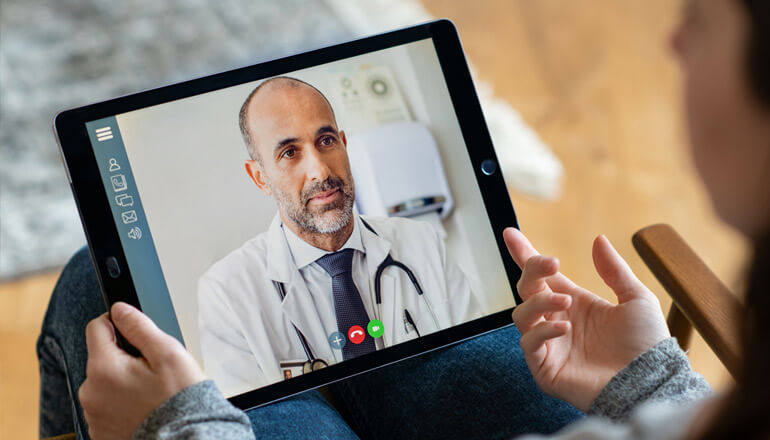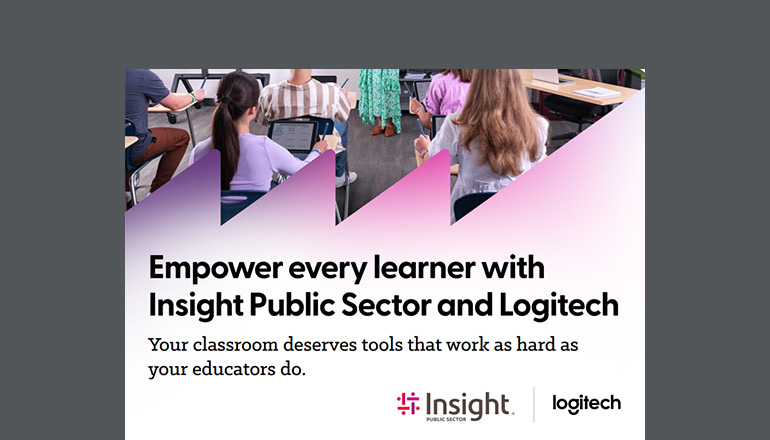Article How to Prepare for Back to School 2020
By Brian Louderback / 18 Jun 2020 / Topics: Devices Hybrid workforce Cybersecurity Networking

Thinking about the future of education raises more questions than answers, but strategic planning can ensure your school is ready for whatever comes next.
As we look ahead to the 2020–2021 school year, the only certainty is uncertainty. K–12 districts, higher education institutions and tribal schools will not only have to reimagine the classroom experience, but will also have to prepare for a range of possible contingencies and roadblocks as the Covid-19 situation continues to evolve.
While solving these challenges can be intimidating, it also allows schools to find new avenues for communication, collaboration and exploration. Whether you adopt fully remote instruction, a split-schedule hybrid strategy or a more digital approach to traditional schooling, this moment offers a productive opportunity to reimagine the classroom and take on digital transformation initiatives that may have been placed on the back burner in the past.
With any strategy you choose, strong investments in these four foundational areas will support student success and establish versatility in the face of change:
Student-centered devices
One thing that hasn’t changed is that the number-one priority in fostering digital learning is getting devices in the hands of students. With the right tools, students can easily access learning modules and complete their assignments while at home.
Many leading brands offer laptop, 2-in-1 and tablet models that have been carefully optimized for education environments. Their mobility allows students to move seamlessly between home and the classroom, and their durable hardware is better equipped to resist wear and tear. For younger grades and students with limited access to technology, intuitive interfaces can accelerate the journey to digital learning.
Connectivity solutions
While personal learning devices are an urgent need, internet access is equally important to ensure students can explore course materials, participate in audio and video lessons, and communicate one-on-one with instructors and peers.
The biggest digital learning requirement is still personal learning devices — but keeping those devices connected is just as urgent.
If your students and faculty already have access to Wi-Fi at home, it’s important to invest in security tools that keep cyberthreats at bay. Schools are not immune to security breaches, and solutions such as access control measures, firewalls and robust authentication will help you minimize risk.
For schools located in areas impacted by broadband disparities, the connectivity equation is more complicated. However, solving it makes a massive difference not only for students, but also for their families and your larger community. Districts across the U.S. have displayed incredible creativity in keeping their students connected this spring. They’ve equipped common public objects such as stop signs with access point technology, and have even transformed unused school buses into large, moveable hotspots for neighborhoods with limited internet service.
Faculty and staff training
In many ways, the questions schools will face over the next few months are matters of change management. Giving students and teachers productive, connected tools is a foundational need, but additional training can help them make the most of the hardware at their disposal ― and can help you realize the full value of your IT investment. This is particularly true for your faculty and staff.
While students adapt to different ways of learning, don’t forget that instructors are also adapting to different ways of teaching.
And, though many of these changes will be productive, they still bring growing pains, especially given the added pressure to adapt quickly. Guidance from educational technology experts smooths the transition and helps teachers develop strategies for meeting immediate requirements in a way that fosters long-term innovation.
It’s impossible to fully replicate the traditional classroom in a digital or even a hybrid space. Instead, educators must figure out the best way to use the tools at their disposal to reach the learning objectives and community goals they have set out for their students. Technology training simplifies that process by minimizing the stress of adopting new hardware and applications so that your teams can focus on their primary passion and area of expertise: serving students.
Opportunities for differentiation
As you move from addressing short-term challenges to preparing for what might come next, you will search for ways to not only deliver lessons effectively, but also to re-establish what makes your school community unique. This is particularly true for higher education institutions where the on-campus experience and extracurricular activities are a major draw for prospective students. Leveraging cutting-edge technologies such as augmented reality can offer an unexpected learning experience that keeps your institution ahead of the curve.
There isn’t a one-size-fits-all approach for handling this turning point, but every school will have to expand its technology platform and reconceptualize the classroom experience in some capacity. You may not be able to return to business as usual this fall, but with the right equipment and training ― and an innovative mindset ― you can establish new ways of serving students and creating a school community.
Create a future-ready school. Insight Public Sector selects, deploys and manages technology tools that fuel student success.
About the Author:
Related articles
Narrow your topic:
Networking Devices Education (K-12) Education (higher) Tech Journal View all focus areas


















